The Thirteen Treasures of the Isle of Britain
Fact or Folklore?
The Thirteen Treasures of the Isle of Britain are enigmatic relics from the rich history of British folklore. But sometimes facts are hidden in folklore because some information is too dangerous to be widely shared. The truth is often hidden between the lines of legend.
Shrouded in mystery and steeped in centuries of myth and legend., these treasures, renowned for their magical properties, have been referenced in various medieval texts. The earliest known references to the Thirteen Treasures can be traced back to medieval Welsh literature, specifically the manuscript “Peniarth 147,” dated to the 15th century. Compiled by Welsh antiquarian and scribe Robert Vaughan, this manuscript preserves a collection of Welsh triads brief verses that highlight various aspects of Welsh culture, history, and mythology. Triad 51 in the manuscript is dedicated to the Thirteen Treasures, listing each item and providing a glimpse into their magical attributes.
- White-Hilt, the Sword of Rhydderch the Generous
When a worthy man drew this sword, it would burst into flames from its hilt to its tip. It belonged to Rhydderch Hael, a 7th-century ruler of Alt Clut, a Brittonic kingdom in what is now Strathclyde, Scotland. Rhydderch was willing to lend his sword to anyone who asked, but he had few takers!
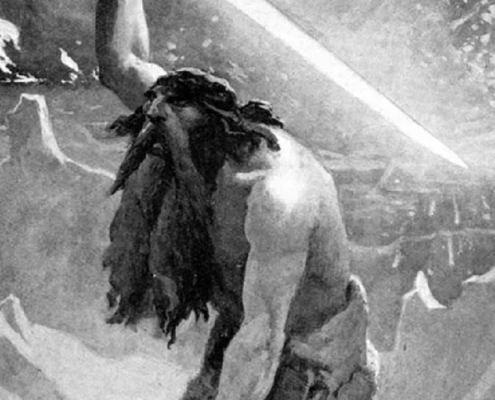
White-Hilt, the Sword of Rhydderch the Generous
- The Hamper of Gwyddno Long-Shank
One ruler of legendary Canolbarth, a sunken land on the coast of Wales, possessed a magical “hamper,” a wicker basket that could multiply food. Known as the ‘basket of plenty,’ when food for one man was placed inside, the hamper would be shut. When the basket was opened again, there would be enough food for a hundred men.
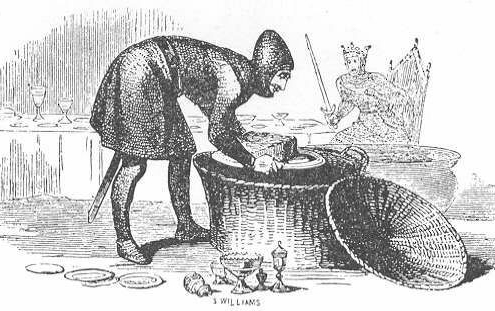
The Hamper of Gwyddno Long-Shank
- The Horn of Bran – Korn Bran Galed o’r Gogledd
According to Welsh legend, this horn once belonged to Hercules, who acquired the object from the head of the centaur Nessus after he was slain by the hero. The horn could grant whatever drink a user wished to find within it.
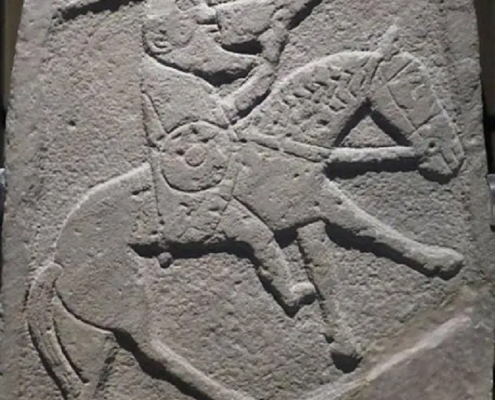
The Horn of Bran – Korn Bran Galed o’r Gogledd
- The Chariot of Morgan the Wealthy
Morgan, the king of Glamorgan, was the grandson and probable successor of King Meurig, who ruled over the early Welsh kingdoms of Gwent and Glywysing sometime between 400 and 600 AD. Morgan was said to have possessed a chariot that could travel quickly to any destination desired by its user.

The Chariot of Morgan the Wealthy
- Kebystr Klydno Eiddin (The Halter of Clydno Eiddyn)
The fifth treasure was a halter fixed to a staple at the foot of the bed of Clydno Eiddin, a ruler in the Hen Ogledd, the Brythonic-speaking area in what is now Northern England and Southern Scotland during the Early Middle Ages. “Eiddyn” is the Brythonic name for Edinburgh, implying a connection to that territory. According to legend, whatever horse Clydno wished for it would appear in the halter.
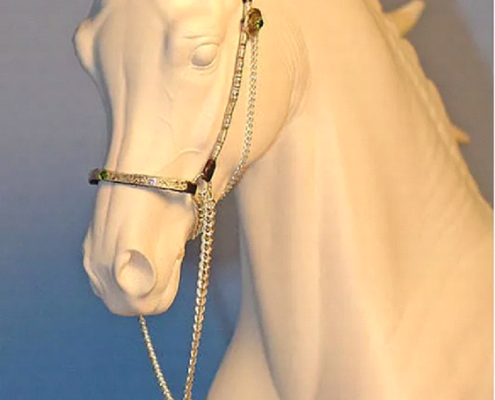
Kebystr Klydno Eiddin (The Halter of Clydno Eiddyn)
- Kyllell Llawfrodedd Farchog (The Knife of Llawfrodedd the Horseman)
Great for a feast but also on the battlefield, the knife was said to serve the company of 24 men at a dinner table. Llawfrodedd Farchog was a hero of Welsh tradition and a legendary figure in King Arthur’s court. He is mentioned in Trioedd Tnys Prydein as the owner of this special knife that was named one of the Thirteen Treasures.
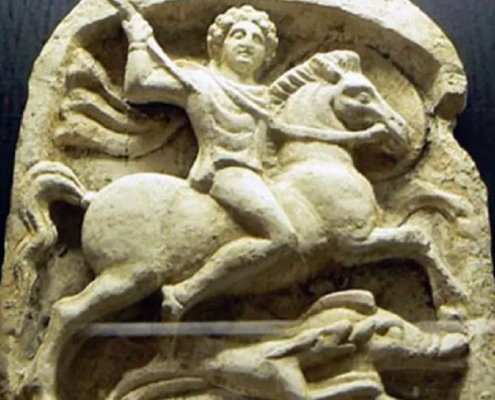
Kyllell Llawfrodedd Farchog (The Knife of
Llawfrodedd the Horseman)
- The Cauldron of Dyrnwch the Giant
This cauldron would quickly boil meat placed in it by a brave man. However, the meat placed in it by a coward will never boil. Thus, the cauldron would reveal who was brave and who was cowardly. The cauldron is said to have belonged to the Welsh god Dyrnwch.
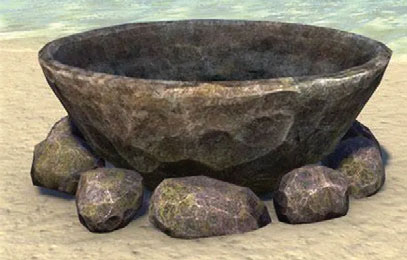
The Cauldron of Dyrnwch the Giant
- The Whetstone of Tudwal Tudglyd
Sharpen your sword on this whetstone, and thereafter, any man whose blood was drawn from this sword will die. There is one caveat, though. The whetstone is only effective on the sword of a brave man. It would have done absolutely nothing for that of a cowardly man. The owner, Tudwal, is thought to have been a 6th-century ruler of Alt Clut, later known as Strathclyde, a Brittonic kingdom in the Hen Ogledd or “Old North” of Britain.

The Whetstone of Tudwal Tudglyd
- The Coat of Padarn of the Scarlet Robe
His red coat, one of the Thirteen Treasures, was said to fit a well-born man, regardless of his size, perfectly. It would not, however, fit a common person.
Padarn Beisrudd ap Tegid, who possessed the coat, was said to be a Romano-British official of high rank who had been placed in command of Votadini troops stationed in Clackmannanshire in the 380s or earlier by Emperor Magnus Maximus.
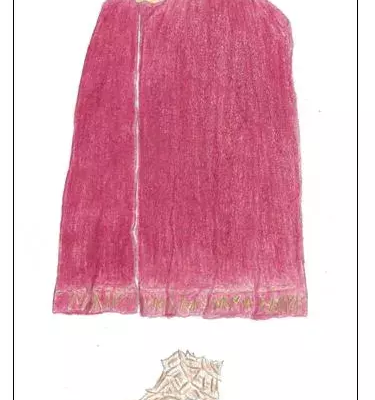
The Coat of Padarn of the Scarlet Robe
- & 11. The Crock and the Dish of Rhygenydd the Cleric
The clay pot and dish of Rhygenydd the Cleric could produce any food the heart desired. Whatever food a user wishes for, it would be found in the crock and dish.
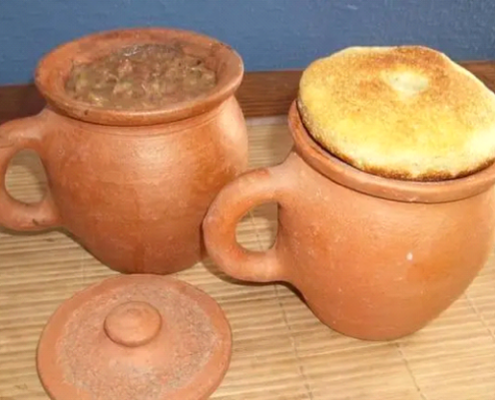
The Crock and the Dish of Rhygenydd the Cleric
- The Chessboard of Gwenddolau son of Ceidio
This legendary chessboard made of silver and gold was said to play any opponent at any time on its own. Its owner, Gwenddoleu ap Ceidio or Gwenddolau, was a 6th-century Brythonic king who ruled in Arfderydd. This is in what is now south-west Scotland and north-west England in the area around Hadrian’s Wall and Carlisle during the sub-Roman period in Britain. His chessboard of gold and silver was said to play any opponent on its own.
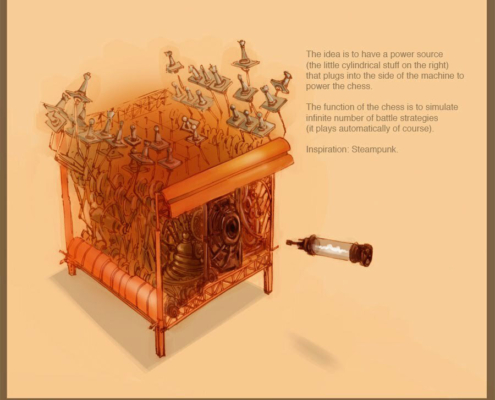
The Chessboard of Gwenddolau son of Ceidio
- The Mantle of Arthur in Cornwall
The magical mantle of King Arthur is said to be a cloak of invisibility. Anyone who wears it instantly disappears from view, although they can see out. The first mention of this item comes from two early sources, the prose tales Culhwch and Olwen (c. 1100) and The Dream of Rhonabwy (early 13th century).
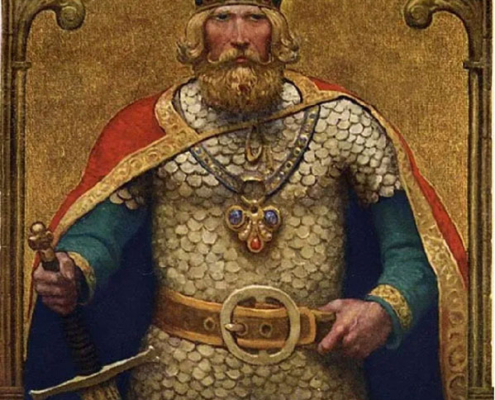
The Mantle of Arthur in Cornwall
Welsh legend has it the Thirteen Treasures were eventually acquired by Myrrdin, or Merlin, from the Arthurian legends. As the story goes, all the bearers of the treasures agreed to hand over their magical items to Merlin if he succeeded in obtaining the Horn of Bran, which they thought was impossible. Merlin, however, somehow did obtain the horn from Bran and, with the other treasures, went into the Glass House or Tower, where they are said to remain until the return of King Arthur.
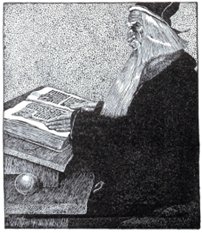
Merlin





 KGRA Digital Broadcasting
KGRA Digital Broadcasting KGRA Digital Broadcasting
KGRA Digital Broadcasting